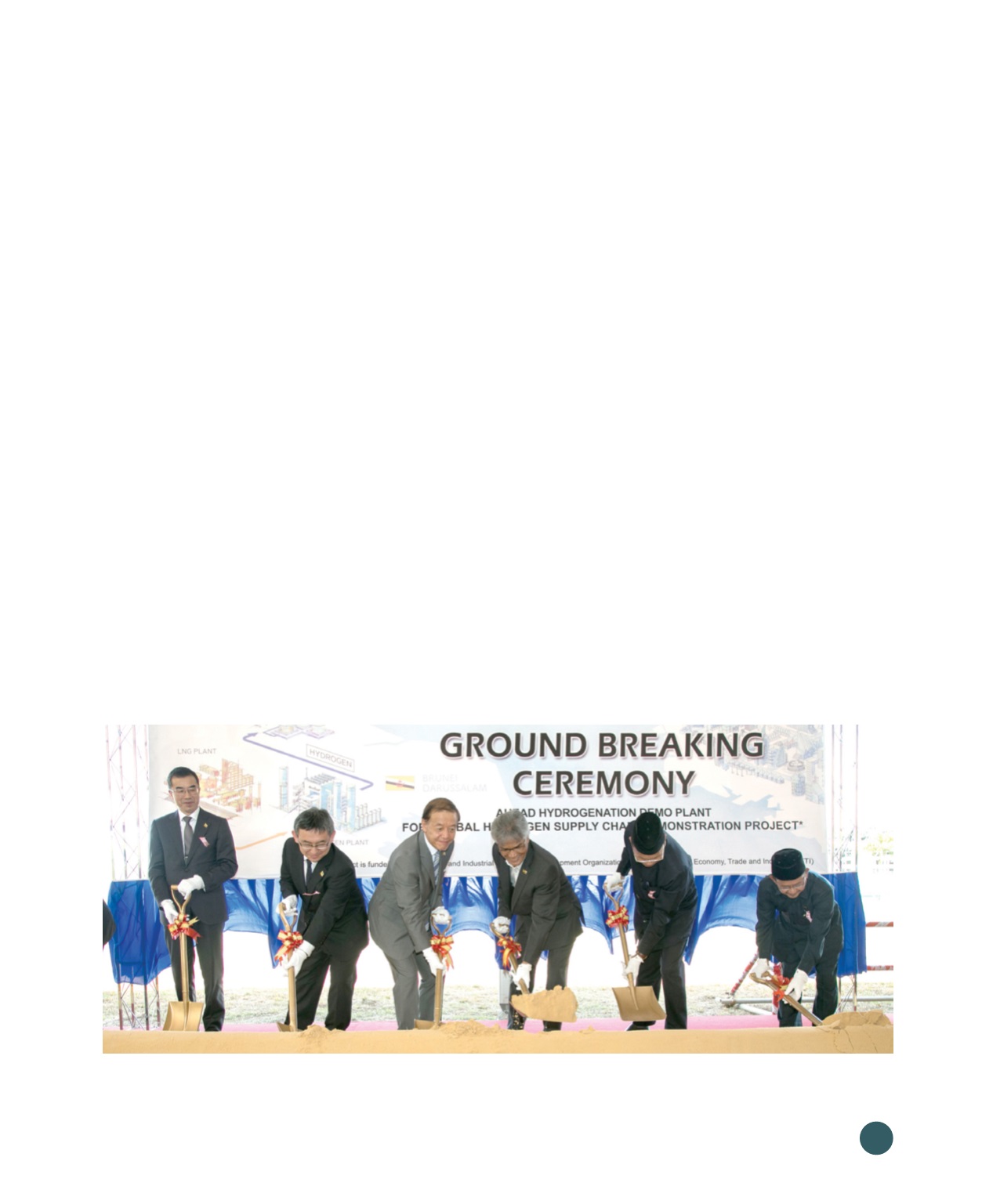

129
OIL & GAS
Ground breaking ceremony for the construction of the world’s first global hydrogen supply chain demonstration plant at Sungai Liang Industrial Park
be one of the pioneers in the development of this
clean energy system.”
The demo plant is scheduled to be completed
in September 2019, with operations to begin by
2020. Hydrogen will then be transported in liquid
form by ship to Kawasaki, Japan for a year. Once
in Kawasaki, hydrogen gas will be extracted from
the liquid and supplied to consumers.
More information about the project was shared
by AHEAD President Hideki Endo during an
interview.
“AHEAD has invested more than USD100 million
in the setting up, and subsequent running of
the operations and management of the demo
plant here in SPARK,” Endo said. “The plant
represents an example of the drive to mass
produce hydrogen for a greener future for the
next generation.”
He cited the various companies that have
contributed technologies for the project,
including hydrogen handling expertise from
Chiyoda Corporation and Mitsubishi Corporation,
and ocean transportation capabilities by Nippon
Yusen Kabushiki Kaisha, among others, adding
that these companies and operational processes
form part of the supply chain outlined in the
proposed project.
Endo also noted that while the SPARK plant is
still a new project, AHEAD already has a small
local workforce to help ensure its smooth
construction and operation. The consortium,
he added, is currently in discussions to further
increase the local workforce involved in the one-
year project.
The plant is slated to be in operation for one year
– from January to December of 2020. Speaking
on the future plans for the plant beyond 2020,
Endo commented, “We are expecting to have a
commercial or semi-commercial supply chain,
but it will have to depend on the marketability
of hydrogen in the future. Currently there are
3,000 fuel cell vehicles being operated in Japan
alone.”
He explained, however, that though hydrogen
consumption from fuel cell-driven vehicles is
low at present, the main consumer of hydrogen
will most likely be power generation companies
which supply electricity to the population.
AHEAD’s decision to choose Brunei as the first
site for the demo plant, was due to the proximity
between Brunei and Japan, and the availability
of natural resources here in the country is also
another factor.
On the plant’s ability to produce hydrogen
from energy sources other than crude oil, the
AHEAD president said, “While the demo plant
is designed to primarily convert fossil fuel into
hydrogen, the gas can also be extracted from
natural gases as well as by-products produced
from certain manufacturing processes.”
“It is possible with hydrolysis technology to
convert renewable energy into hydrogen as
well – this is another avenue for hydrogen
production,” he added.









